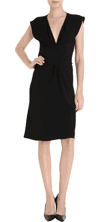Textiles, Merchandising and Fashion Design, Department of
First Advisor
Yiqi Yang
Date of this Version
12-2016
Document Type
Thesis
Abstract
In this research, waste textile materials like polyethylene terephthalate (PET) and cotton were compression molded into composites. The main idea was to use waste textiles to develop composites like PET and cotton. PET acts as matrix and cotton as reinforcement because PET is thermoplastic whereas cotton is non thermoplastic.
Approximately about 21 million tons of textile solid waste is being disposed into landfills annually, leading to vast environmental properties and waste of valuable raw materials. By using waste PET and cotton textiles there are technical as well as environmental viabilities. However, implementing them into fabricating composites is not widely conducted.
Compression molding is a feasible approach to use waste PET and cotton textiles into fabricating composites that have good potential for industrial applications. In this research, investigating the effects of plasticizers and alkalis on decreasing the processing temperatures of composites was studied so that the cotton is protected during compression molding. In the following paper, it is shown how plasticizers can be effectively used to decrease the melting temperature of PET. The influences of chemicals on the melting temperature of PET and the mechanical properties of the composites are investigated. In my future research, the feasibility of compression molding PET and cotton fabrics into composites with other chemicals will be studied. More molecular characterizations of individual PET and cotton components plus static and dynamic mechanical characterizations of composites will be conducted.
Advisor: Yiqi Yang


Comments
A THESIS Presented to the Faculty of The Graduate College at the University of Nebraska In Partial Fulfillment of Requirements For the Degree of Master of Science, Major: Textiles, Merchandising and Fashion Design, Under the Supervision of Professor Yiqi Yang. Lincoln, Nebraska: December, 2016